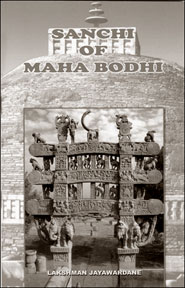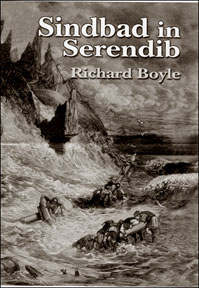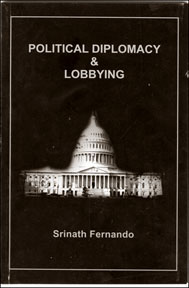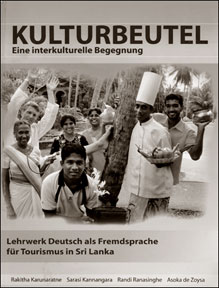|

Communicating through stone inscriptions
Title: 'Sri Lankave Shilalipi
sannivedanaya'
Author: Sirisaman
Wijetunge
Published by: Ariya
Publishers
 Written Communication has come a long way, nearly 5,500 years from
the Sumerian clay tablets to the World Wide Web. In Sri Lanka we have
the inscriptions written on stone, etched for ever, till the sun and the
moon exist. Written Communication has come a long way, nearly 5,500 years from
the Sumerian clay tablets to the World Wide Web. In Sri Lanka we have
the inscriptions written on stone, etched for ever, till the sun and the
moon exist.
When our kings installed the stone inscriptions, they would have
believed only of communicating with the people of his kingdom and their
future generations. But today these kings and other creators of these
inscriptions are communicating with historians, archaeologists,
anthropologists and sociologists who are trying to study this period of
history in our country. Communication takes on a new meaning with regard
to the stone inscriptions, and that is what this book is all about.
He should know what he is writing about, as he had been the former
Asst. Director of the Dept. of Archaeology and Media Consultant at the
Central Cultural Fund. When we think of inscriptions in Sri Lanka we
always think of Prof. Senerath Paranavitana because the service he has
rendered is invaluable.
There have been others who have studied and written about our ancient
inscriptions, most of them looking at the historical aspects. According
to Sirisaman Wijetunge this is the first time that a study has been made
of the inscriptions as a medium of communication.
He draws our attention to the fact that at the time writing on stone
was used as a medium of communication, how strong it would have been. It
is not easy for us to imagine what a time consuming, tedious task it
would have been to use a hammer and chisel to carve out the letters on
the unyielding stone, copying it from a ola leaf in which it had been
first written and which had been approved.
During a period where the ola leaf was the only and convenient medium
for writing, the stone slab or pillar played a key role, as it was
displayed in a public area, accessible to all the people passing by, and
survive the vagaries of the elements.
The book would be useful not only to the students of history and
archaeology, but also to all of us, because Wijetunge explains about
Communications, and also about our stone inscriptions, the different
types, like slab and pillar inscriptions and those above the drip ledges
of caves donated to the Sangha.
Moreover, he explains the types of inscriptions and the reasons for
their writing and also about the contents. He deals in detail about the
pillar inscriptions, announcing the grant of land and harvest, relief
from taxes and restrictions imposed on officials on their authority with
regard to these religious institutions. These pillar inscriptions used
not only the Brahmi script but also symbols, which could have been a
very powerful medium of communication.
Some of these pillar inscriptions had the figures of a crow and the
dog, conveying the message that any one who violated the message in the
inscription would end up as a crow or a dog. The signs of the sun and
the moon meant that this would stand till as long as the sun and the
moon existed.
The value of the book is further enhanced by the inclusion of the
estampages and the copies of several important and well known
inscriptions found in our country.
Bohodevi
Story of the great Stupa
Title: Sanchi of Maha Bodhi
Author: Lakshman Jayawardene
Reviewed by Dr. Jayantha Weerakoon
 Sanchi of Maha Bodhi relates the story of the Great Stupa Sanchi and
the Sacred Relics of the two Chief Disciples of Buddha, Sariputta and
Maha Moggallana. It gives brief but accurate information to any pilgrim
who intends visiting Sanchi in Bhopal, India. Sanchi of Maha Bodhi relates the story of the Great Stupa Sanchi and
the Sacred Relics of the two Chief Disciples of Buddha, Sariputta and
Maha Moggallana. It gives brief but accurate information to any pilgrim
who intends visiting Sanchi in Bhopal, India.
Its author Lakshman Jayawardene being an author of many publications
has made use of his experience and close connections with the Maha Bodhi
Society of Sri Lanka in collecting relevant material and data available
when he wrote this book. Hence the reader has a right to believe that
the contents of the book as most reliable.
The pages of the book are arranged in an appropriate sequence
connecting the information to introduce and describe the importance of
Sanchi to the Sri Lankan Buddhists in particular and to the awakening
Buddhist devotees of the world at large.
The book starts with a short but a complete introduction to the
origin of Sanchi at modern Vidisha. It explains "Sanchi's link to Sri
Lanka and why it has a great significance to the people of Sri Lanka".
With its close similarity to Mihinthale in respects of surrounding,
atmosphere and landscapes both Stupas, Sanchi and Mihinthale are known
as "Chetiyagiri". To quote the author, "it was from this sacred place (Sanchi)
Mahinda and Sanghamitta, the son and daughter of the Emperor Dharmasoka,
left for Sri Lanka to spread the Word of the Buddha".
Sanchi of Asoka fell to ruins and remained for many hundred years,
and was not given the due respect until Maha Bodhi Society renovated it
and brought to the preset position in the Nineteenth Century. Hence,
most appropriately the author of this book has re-named the great stupa
as "Sanchi of Maha Bodhi".
The importance of Sanchi to the Buddhists further heightens due to
the fact that the Sacred Relics of the two Chief Disciples of the Lord
Buddha, Arahans Sri Sariputta and Moggallana are enshrined in Sanchi.
The author's inter-connected story of the Sacred Relics keeps no room
for the reader to doubt their authenticity "as being those of the
Buddha's Chief Disciples, Sapurisa Sariputta and Sapurisa Moggallana".
Thus the whole story is most explicitly connected from Asokan times
up to the time Maha Bodhi Society officially received the Relics from
the British Government and the Sri Lankan Government kept them "at the
Colombo Museum for one year, nine months and twenty two days for the
veneration of the Buddhist public in Sri Lanka".
After the exposition the Relics were officially handed back to India
to be enshrined at the special Vihara at Sanchi in January 1949.
The book is not complete had the author not included the
contributions made by Anagarika Dharmapala, the founder of Maha Bodhi
Society.
Anagarika Dharmapala had the foresight and the initiative to
establish the permanent headquarters of the Maha Bodhi Society at
Culcutta and its branches in America, London and Madras. Inauguration of
the Maha Bodhi Society and the brave steps taken by Anagarika Dharmapala
paved the way for the making of modern Sanchi and the revival of
Buddhism in India.
Last pages of the book take the form of a tourist guide. Any one
going through the book from the beginning to the end gets a complete
picture of Sanchi, thereby creating in one's mind a keen interest in
visiting modern Sanchi.
To my contention Sanchi of Maha Bodhi is a valuable exposition of the
great stupa and a key to any pilgrim who intends visiting Sanchi in
Bhopal India.n
Strange tales
Title : Sindbad in Serendib
Author: Richard Boyle
Published By: Visidunu Prakashakayo
 As the book's sub-title reads here is a collection of 'strange tales
and curious aspects of Sri Lanka.' In this well-researched and highly
readable book, Boyle proposes that Sindbad's - the resolute traveller
from Baghdad's - encounter with the island was indeed a discovery of
something unsought, or serendipity - a concept that's focused on in
another of this volume's essays. As the book's sub-title reads here is a collection of 'strange tales
and curious aspects of Sri Lanka.' In this well-researched and highly
readable book, Boyle proposes that Sindbad's - the resolute traveller
from Baghdad's - encounter with the island was indeed a discovery of
something unsought, or serendipity - a concept that's focused on in
another of this volume's essays.
On Sindbad's eastward journey, perhaps his ship had run aground at a
notorious wreck location, Okanda, the sole place on the island's
coastline hemmed in by a high hill, largely conforming to Sindbad's
description.
Particular knowledge of Serendib is revealed by Sindbad, a character
whose occurrences were shaped from the reports of early Arab traveller-traders.
He climbed Adam's Peak, witnessed a perahera, and mentioned the pearl
fishery and rubies - this last pair also subjects in Boyle's collection.
'The Anaconda of Ceylon', 'The Nittaewo: Dagger-Clawed Little
People', 'Galle in its Heyday', 'Tales of Giant Squid', 'Ratnavalli's
Children', Ritigala: The Enigmatic Mountain' and 'Ernst Haeckel's Island
of Marvels' are some other subjects.
This book also contains many rare colour plates. Illustrations from
the 1886 edition of 1001 Nights, 'A 22 foot anaconda killed in 1796', 'Wakwelle,
near Point de Galle' from Illustrated Australian News (1871), 'Rodi
girl'(unknown), 'Waterfall on the river Belihul Oya' from Ernst
Haeckel's Wanderbilder (1905-06) to mention a few.
Art and skill of conducting public affairs
Title: Political Diplomacy & Lobbying
Author: Srinath Fernando (Vishva
Lekha - 2007 - Sarasavi Nugegoda)
 Political diplomacy is the art and skill of conducting public
affairs. It differs from the style of government to the charisma and
allure of the very individuals who shape public policy. Political diplomacy is the art and skill of conducting public
affairs. It differs from the style of government to the charisma and
allure of the very individuals who shape public policy.
The author has delved into the contemporary history of world affairs
and has tapped into various incidents and political scandals that shook
the world. Lobbying is a profession where political actions are brought
to bear upon the governments either to pursue, deviate or compromise on
a particular course of action. Lobbying includes all attempts to
influence law makers and public officials, whether by legislators,
constituents or organized groups.
The freedom of thought and expression is quintessential to a healthy
democracy as such group interest plays a dominant role in shaping public
policy.
The book covers major political events such as Apartheid in South
Africa, Anti-Communism in United States during the post World War II
political developments in U.S, Israeli Commando Assault at Entebbe
Uganda, rise of Chilean Communism and the downfall of Salvador Allende
Government and the covert diplomacy in Chile, Nazi political influence,
and to the recent Dubai Ports World (DP World) saga that caused panic in
U.S when it made a failed bid to acquire U.S ports.
The book offers fascinating new perspectives on the culture of covert
and overt political diplomacy and the contemporary history on world
affairs. The book provides insights on how covert diplomacy helped
resolve disputes which would otherwise have caused intractable to
official diplomats.
Srinath Fernando is a Freelance Journalist and a Political
Lobbying/Government Relations Consultant. Apart from his part time
research on Political and Public Policy issues he has throughout been
employed as Commercial/Administration Manager with petroleum companies
in Oman, Yemen, Bahrain, Dubai and Qatar and has gained wide knowledge
in public affairs and government relations.
German for the hospitality trade
 Kulturbeutel will be the first textbook for teaching German in Sri
Lanka for learners in the hospitality trade. It is a collaborative
project of the Goethe-Institute, Sri Lanka and the German Section of the
Department of Modern Languages, University of Kelaniya. Kulturbeutel will be the first textbook for teaching German in Sri
Lanka for learners in the hospitality trade. It is a collaborative
project of the Goethe-Institute, Sri Lanka and the German Section of the
Department of Modern Languages, University of Kelaniya.
This textbook project was fully funded by the Tsunami Relief
Programme of the Foreign Ministry of the Federal Republic of Germany.
Kulturbeutel follows the entertaining story of the German family
Hartmann who arrives in Sri Lanka on a holiday. Chapter by chapter the
learners accompany them throughout their stay in Sri Lanka.
The Hartmanns are confronted with day to day situations of a tourist.
The textbook enables the learners to deal with these situations.
The book will equip the learner with the skills to communicate in day
to day situations negotiating with the German speaking tourist. As such,
the textbook in addition to reading texts, written and oral exercises,
has an array of listening exercises and exercises to improve the
pronunciation and intonation. Some games and songs too have been
included.
Textbook team: Rakitha Karunaratna, Sarasi Kannangara, Randi
Ranasinghe, Dr. Asoka de Zoysa, Heidi Steiner (DAAD)
Project coordination: Rudiger Punzet (Goethe-Institute Sri
Lanka/Tsunami Relief Programme.) |
